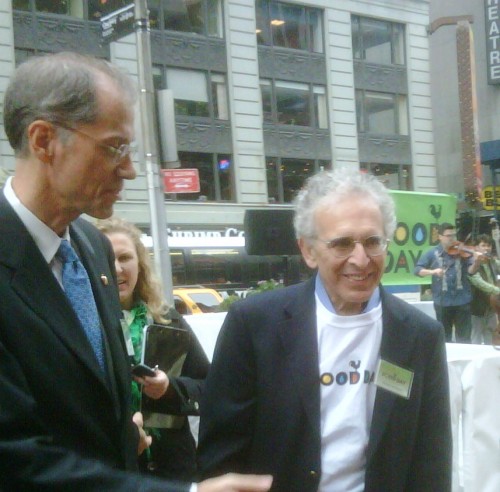Mayor Bloomberg’s soda ban proposal hits the wall
Yesterday, New York City Mayor Michael Bloomberg announced a ban on sales of sugary drinks larger than 16 ounces in restaurants, delis, sports arenas, and movie theaters.
The reactions have been ferocious, and not only from the soda industry, which placed this ad in today’s Times.

The New York Times also weighed in with an editorial arguing that the mayor has now gone too far and should be sticking to educational strategies.
Alas. If only educational strategies worked. But they do not.
We know this from what it took to discourage people from smoking cigarettes. We also know this from research on eating behavior. This shows that it doesn’t take much to get people to eat too much.
Just barrage us with advertising, put food within arm’s reach, make food available 24/7, make it cheap, and serve it in enormous portions.
Faced with this kind of food environment, education doesn’t stand a chance.
That’s the point the Mayor’s proposal is trying to address, however clumsily. After all, a 16-ounce soda is two servings.
Sugary drinks—especially large ones—make sense as a target for a portion size intervention.
- They have calories but no nutrients (“liquid candy”).
- The larger the serving size, the more calories they contain.
- They are widely consumed, often to the extent of hundreds and sometimes thousands of calories a day.
- Research links them to obesity (people who habitually consume sugary drinks tend to have worse diets and weigh more than those who don’t).
- People tend to drink the amount that is in the container.
The sugary drink industries have much to answer for their role in obesity promotion.
- They put billions of dollars into advertising, much of it directed to children and minority groups.
- They lobby Congress and federal agencies to prevent laws and regulations that might affect sales.
- They co-opt health organizations to neutralize criticism (hence: the Academy of Nutrition and Dietetics’ advice to focus on “education and moderation”)
- They attack public health professionals who advise “don’t drink your calories.”
- They attack the science and make it appear confusing (see the above ad which does not mention studies that show otherwise).
- They price drinks to favor the largest size servings; an 8-ounce soft drink costs much more per ounce than a 2-liter bottle.
If the Beverage Association really wanted to help Americans eat more healthfully, it could change all of those practices.
The Mayor is committed to improving the health of New Yorkers and is trying to figure out ways to do that.
Beverage companies are interested in one thing and one thing only: the financial health of beverage companies. And they have convinced many Americans that the financial health of beverage companies trumps public health.
Education? I’m for it if it’s focused on educating the public how beverage companies really operate.
Addition: The New York City Health Department has been collecting endorsements from public officials and health advocates and is posting them online. I’m in good company.








